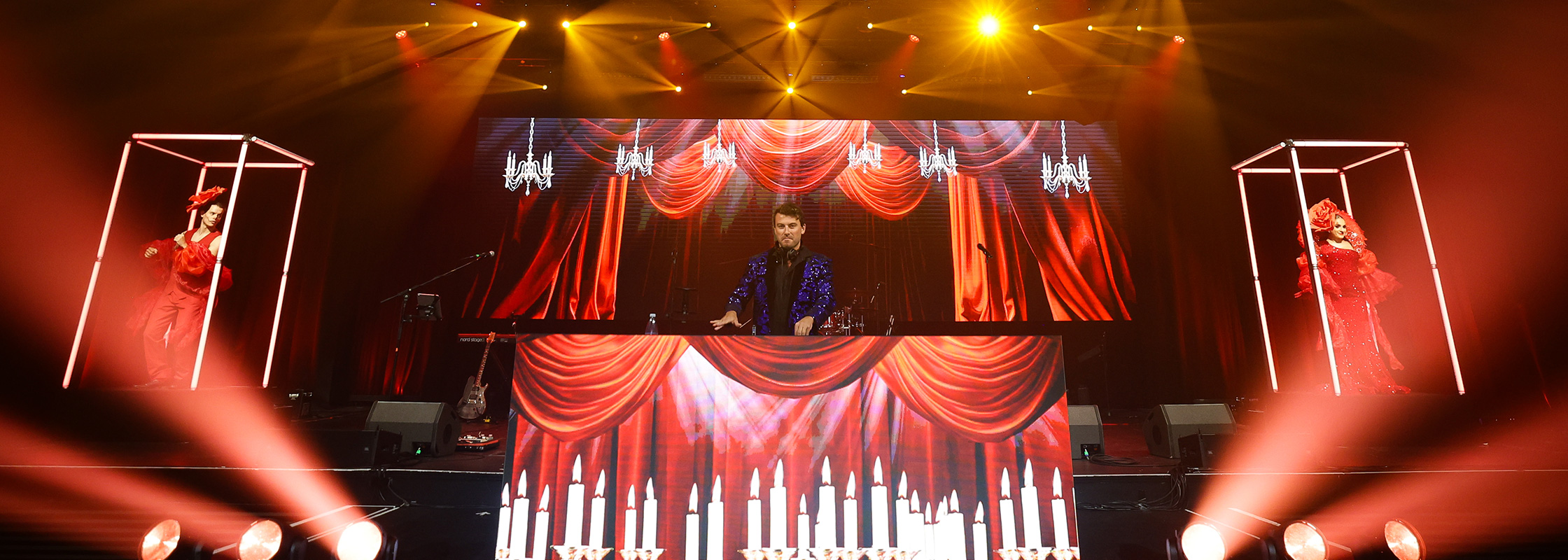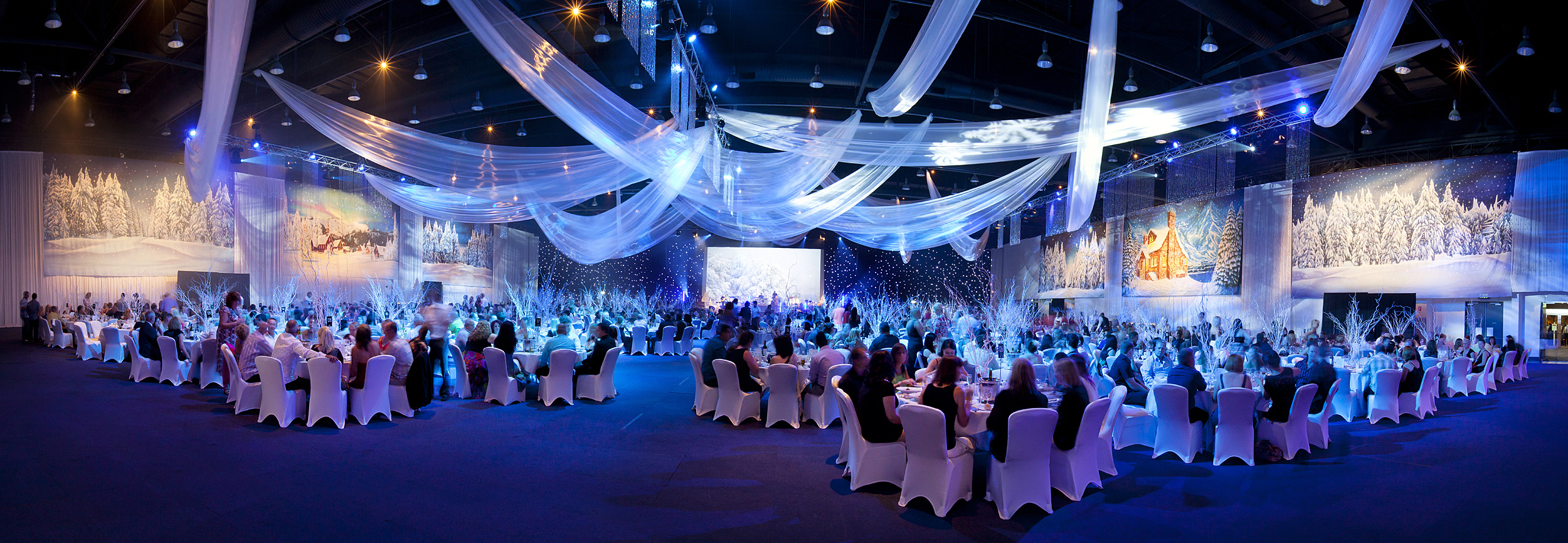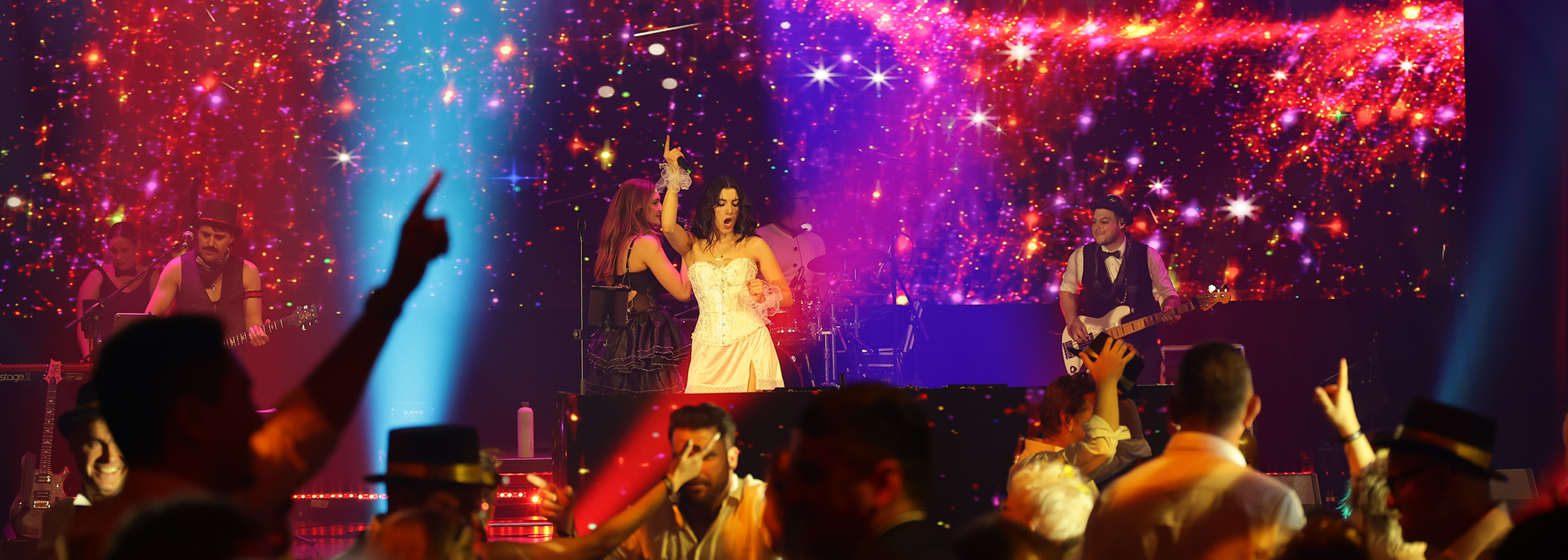Related Posts
Tags
Designing transformative experiences using Virtual Reality at corporate events
Virtual Reality (VR) is one of the most hyped technologies of the last decade. Global giants Google, Microsoft, Apple, and Facebook have all invested billions in building the hardware, creating software, and developing applications. Event professionals are jumping on the trend and realising the potential of VR in transforming their events. The short; VR in the event space is here to stay and its the ideal environment to utilise the technology’s potential.
We’re seeing VR restaurants pop up, car manufacturers turning mundane road trips into action-packed theme-parks, sensorial VR tours of breweries and some confronting education on road safety thanks to VR experiences.
VR totally takes over your guests’ senses. It is about completely commanding your audience’s attention. It offers unparalleled engagement and concentration when compared to a video or spoken presentation. If you’re seeking to entertain, connect and delight, it enables total freedom of imagination. There are several off-the-shelf VR experiences such as real-world simulations of climbing Everest, diving on the Great Barrier Reef and the like. If they fit with the theme of your gala dinner or topic of your conference, they’re a great ice-breaker and novelty to get your guests talking. This is as tangible as you get in a virtual world. Experiencing touch, excitement fear and curiosity.
How can events benefit from using Virtual Reality
While consumer adoption of VR for gaming and entertainment at home has been much slower than expected, savvy operators in the event space and enterprise have been the quickest to realise its potential.
VR applications for Conferences and meetings

Virtual reality can be an excellent vehicle for team building exercises and business activities aimed at strengthening goals and creating a strategic focus. A shared VR activity is a perfect icebreaker for attendees that haven’t met. There are many off-the-shelf VR puzzles and games that get people working in teams and are perfect for this. More businesses want to show their audience instead of just addressing them through words or endless PowerPoint slides. During a keynote address, instead of just talking about a subject, why not immerse the audience? The presenter asks the crowd to put on the headsets and continues to address them as they explore a simulation of the content under discussion.
The CEO of Intel, Brian Krzanich, kicked off the CES 2017 conference with an incredible VR experience cementing themselves as heavyweights in the area. Intel placed 260 VR units in chairs for all press attending the event where they embarked on an incredible journey starting with a wingsuit flight over Moab, Utah where they then landed on the desert floor. Shortly after, the flyers were shuttled to Vietnam to take in the sights of Ban Goic waterfall. After experiencing more spectacular scenery the VR tour ended with court side seats at an NCAA basketball game. Once they removed their virtual reality helmets, they found themselves sitting back in the audience at the event in Las Vegas.
This example shows Krzanich and other industry leaders use virtual reality at events to completely change the way attendees experience exhibitions. VR technology has also enables connectivity for conference attendees spread interstate and internationally. It enables virtual attendance for those who can’t be there to experience the presenters and multimedia live while wearing headsets at home. VR lets people from around the world meet in the same place at the same time simply by putting on a headset. Meetings and breakouts can also be run using VR conferencing tools like Facebook Spaces.
VR for Fairs, Exhibitions or Trade Shows
Get visitors to your stand or display excited about engaging with your brand via a VR experience. Give them an exciting branded challenge or demonstration that gets their adrenaline pumping; it’s a great way to stand out and be remembered. One insurance provider used VR to promote its products in a rather unusual way. NRMA Insurance designed a car crash simulator to show how car safety features have improved over three decades. “Victims” put on a VR headset, climb behind the wheel of a showroom car, then (virtually) crash into a barrier at the same speed that actual crash tests are conducted. The user then goes through the same simulation, only behind the wheel of an older car with fewer safety features. Users have firsthand experience of being in a major car accident and walk away unscathed at the end, but left with a lasting impact.
A large U.S. home improvement company, Lowe’s, helped customers bring to life their design vision with Holoroom. Customers can design their kitchen or bathroom and view it in VR using Oculus Rift in-stores, and take-home a free Google Cardboard viewer to enjoy their room design whenever and wherever they choose. This application of VR could be applied for various products and services to help generate sales and new leads at exhibitions and trade fairs.
VR for training seminars or product launches
They say doing is far better for learning than just seeing or hearing. And when you can’t physically demonstrate the new product, service or solution VR is the next best thing. VR is an excellent training platform because it’s cost effective and the closest you’ll get to doing it in real life. Any simulations feel real to the user. Users can make a decision that feels impactful, but it can still be changed or reset entirely. This is particularly useful for the medical industry where a wrong action can result in death. VR provides an effective vehicle for learning new applications, technologies or sales training on new products such as a latest car model. The possibilities are endless. Since 2018, German logistics company Deutsche Bahn uses VR for immersive training experiences using an application called Engaging Virtual Reality.Recruiting Talent at a careers fair
Like with any media, using the right technology to appeal to your target market will make your campaign more effective. It’s no secret that VR is more popular among younger users. 50% of users between the age groups of 20-29 and 30-39 are very interested in virtual reality, with only 6% expressing no interest at all.
So when German railway company Deutsche Bahn wanted to recruit young talent they turned to VR experiences at a careers fair. Candidates could experience first-hand the lives of train conductors, electricians, and construction workers. The recruiting team found that exposing candidates to this experience resulted in higher-quality applications and candidates who were interested in the positions.
“The idea is to give people a really good insight of the jobs at Deutsche Bahn. We want applicants to get a close look over the shoulder of an electrician or a train driver. That is something that makes the application process very tangible and very satisfying. We can show how fascinating jobs are in the real world,” says Kerstin Wagner, head of talent acquisition at Deutsche Bahn Mobility Logistics.
VR for Charity Events
Show your donors the actual impact of their contribution in a way they can almost touch and feel. Guide them through a ‘before and after’ experience that illustrates exactly what you can achieve together. A VR campaign does something many cause-driven organizations all over the world struggle to achieve. Virtual Reality can show donors exactly where their money is going and the outcome it achieves.
Toms: Virtual Giving Trip.
Toms, a popular shoe company, is well known for donating one pair of shoes to a child in need every time a customer buys their own pair. The charity found a new way to inspire its customers to give by taking them on a journey while wearing a VR headset. The Toms Virtual Giving Trip is narrated by Blake Mycoskie, the founder and Chief Shoe Giver of Toms, and one of his colleagues. As they describe the story of Toms’ founding, their VR experience takes viewers on a trip through Peru, where Blake and the shoe giving team visit a school of children who are about to receive the shoes they need for the first time.
VR for Sales Events and Launches
From a virtual factory tour to product experience, VR can amp up a sales force and help them truly understand the product and your objectives. Beyond the event, a portable VR version of the content can be used to inspire their customers! Some companies aren’t limiting themselves to brining just products to their tradeshow, instead they’re using VR technology to bring the entire building with them. What better way to immerse customers into your brand. In 2016, Anheuser-Busch gave SXSW attendees a VR tour of their Budweiser St. Louis brewery that involved seeing, hearing, and even smelling different parts of the facility. Users wore VR headsets and were led on a tour of different rooms to learn about the brew. When they toured near the hops that went into the beer, brewery employees held actual hops under the attendees’ noses. And of course, attendees got to taste the beer afterwards.
Have you considered VR for your event
Create an immersive experience that’s more engaging, interactive and persuasive than mere video. It’s more interesting and better at holding attention than simply presenting in the traditional form. VR is a perfect platform to take your audience deep into where you want their minds to be. The most important factors to consider in using VR at your event is what purpose does it serve, what story does it tell, and how are you going to obtain, customise, or create it? Avoid using VR purely as a gimmick. Instead, provide real value to attendees and stakeholders. The most important part of adopting any technology is the impact it will have on your strategic goals.
Ask yourself what the goals of your event are first and then see how you can leverage VR to help get you there.
Here’s some questions to think about when considering VR:
- Will utilising VR equipment help you attract and meet more contacts at your trade show booth?
- Do you want something to set you apart from other exhibitors?
- Would VR take your attendees to a location you are talking about, transport them into a building that is being proposed?
- Do you need to provide your audience with a more immersive way to experience your videos, photos, or games?
- Would your employees gain a deeper understanding of their training?
- Will VR show your donors how their investment can transform someone’s life.
The goal is to make the experience more useful, impactful or memorable than what has been done previously, no matter what your event.
The gear and the content
VR can be experienced with something as simple as a cardboard holder for a smartphone paired with VR apps, or a high-tech immersive helmet and hand sensors wired up to a supercharged PC. The biggest emerging category of hardware in VR is stand-alone glasses, where the computer, vision, and sound are all contained in one battery powered lightweight device with wireless capability. A leading example of this is the Oculus Go, which is the model that Encore Event Technologies deploy on our events. Keep in mind the realities of the space required if you’re using VR for a competitive team challenge. If attendees are expected to swing, duck and dodge you’ll need to allocate enough room to avoid any ‘real-world’ injuries!
Find out more about using VR in your events
Many industries are now awash with great examples of VR and although it’s a little too soon to call it mainstream, it appears that we are reaching the tipping point. The technology is becoming cheaper and the number of companies producing these experiences is growing, which can only mean we will see it more not only at events but for a widening number of applications. Business investment will likely be a strong driver with demand to create virtual meetings in a time-poor world. There are already products coming to market that enable meeting attendees to dial into a boardroom and see, hear and interact with each other as if they were present. The question now is not if, but when and how you will be using VR in your events.
At Encore we love finding ground-breaking event applications for new tools like VR. We’ve already produced experiences for many event types and purposes and are thrilled at the possibilities it presents. This is event planning on a new level. The ability to put your event ahead of the game offers memorable occasions not soon forgotten. Contact us to explore how we can take your next event to virtual new heights.




I am going to go ahead and bookmark this content for my sis for the research project for class. This is a pretty web page by the way. Where do you get a hold the design for this web page?